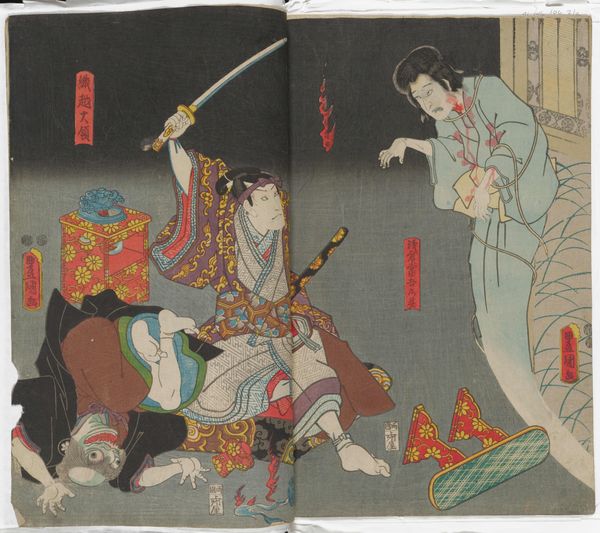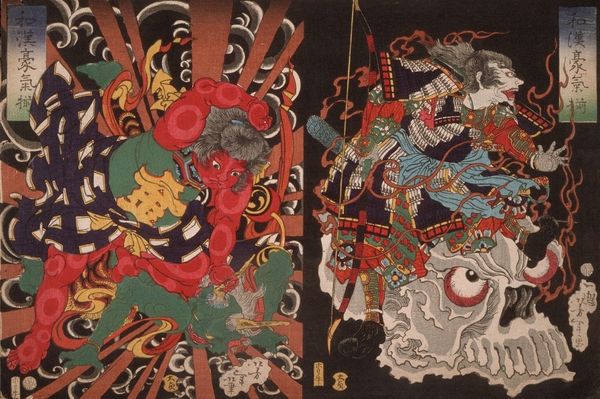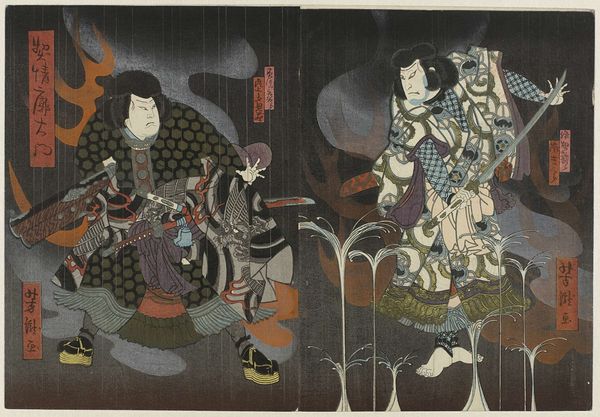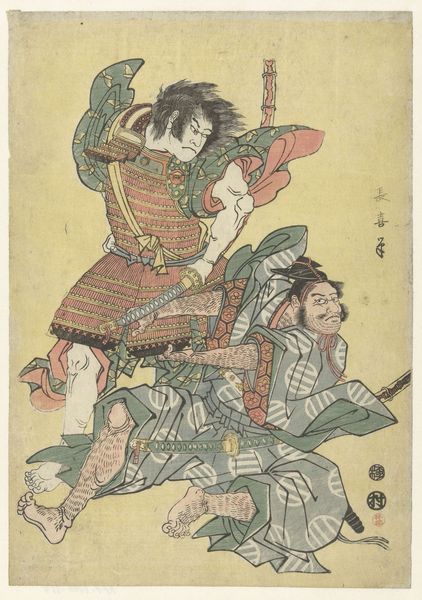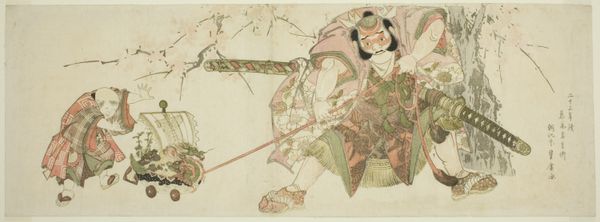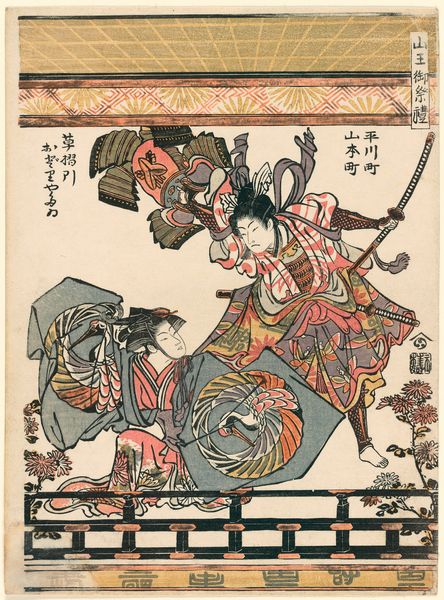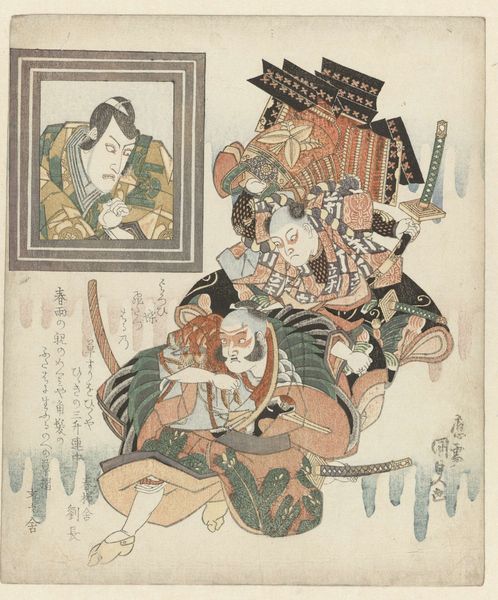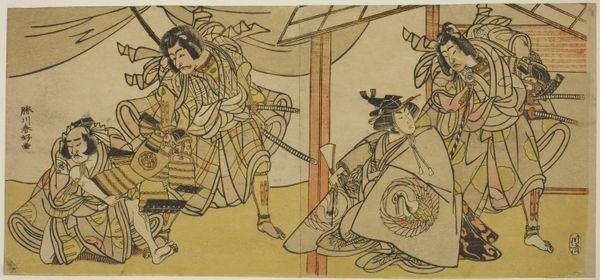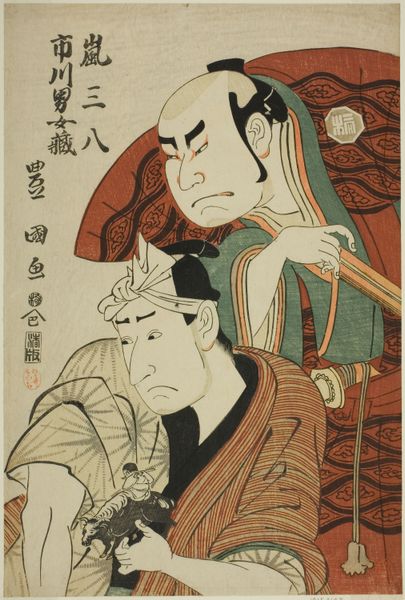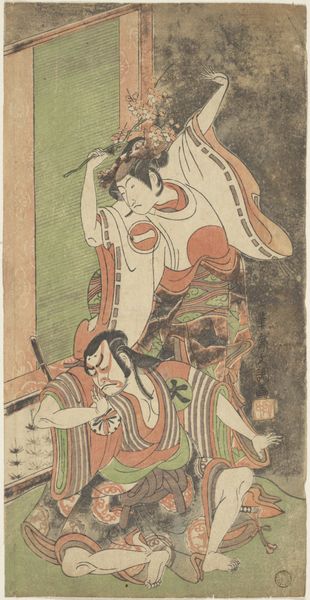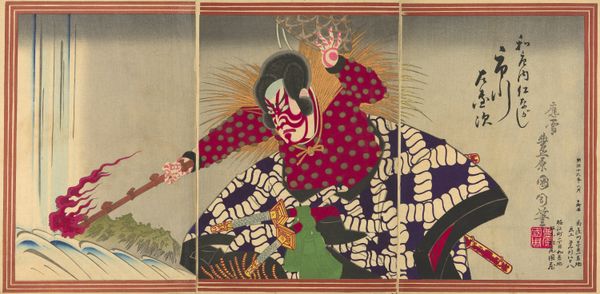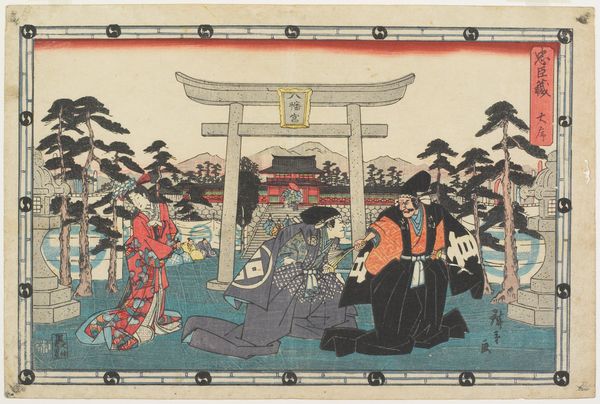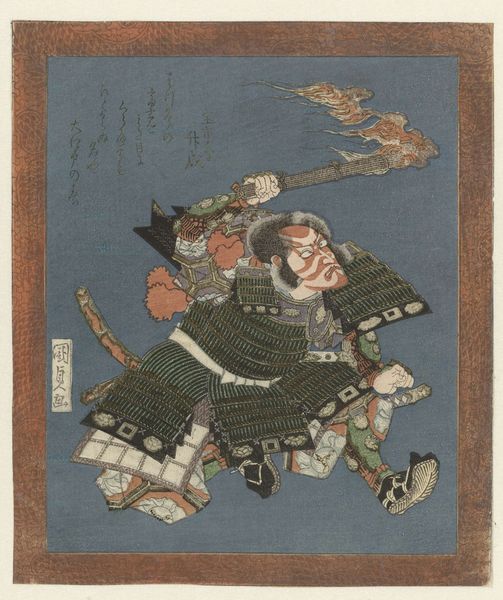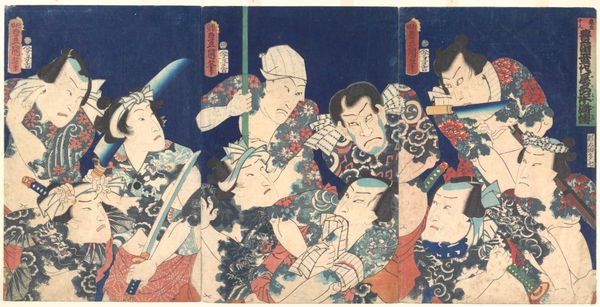
The actors Ichikawa Sadanji I as Imagawa Yoshimoto and Onoe Kikugoro V as Mori Shinsuke 1884
0:00
0:00
Dimensions: 73.2 × 37.0 cm
Copyright: Public Domain
Curator: The density is arresting, isn’t it? So much visual information crammed onto a woodblock print. Editor: Yes, it feels almost claustrophobic. And yet… dynamic! Like a captured moment from a play frozen in time. There’s so much energy, but something a little tragic about it. Curator: Well, what you’re feeling is the essence of ukiyo-e. The floating world—often ephemeral theatre. The piece we’re observing is called "The actors Ichikawa Sadanji I as Imagawa Yoshimoto and Onoe Kikugoro V as Mori Shinsuke," created in 1884 by Toyohara Kunichika. Note how it resides in the Art Institute of Chicago's collection now, echoing those trade routes across cultures. Editor: Ukiyo-e, literally "pictures of the floating world", always suggests theatre somehow; each character feels larger than life with those intense stares, almost screaming, even frozen as they are... I read their faces like the emotional registers of some kind of violent opera. Look how meticulously the costumes and armor are delineated with vivid color, contrasted by the solid charcoal black background and punctuated with those strange blood-red flowers in the upper right. The flowers actually amplify that tragedy, or the suggestion of violence. Curator: That’s a particularly apt observation about the symbolic use of those flowers and also an entry point into the layered historical narrative Kunichika presents to us. His masterful technique uses visual codes that tap deep into the psyche; the cultural memory associated with samurai ideals, for instance, and valorization of particular historical battles as allegories. It is this historical weight, these archetypes on stage, playing out those deeply woven aspects of loyalty and courage, betrayal and downfall... Editor: So, in essence, he’s painting not just a scene, but a tapestry of emotions that reverberates with cultural echoes. The artifice of theater reflecting—distorting—reality. Curator: Precisely. And consider, ukiyo-e allowed these theatrical portrayals to become widely accessible, almost like celebrity posters for Edo-period audiences. These icons and their associated virtues become democratized into the popular consciousness. It’s an elegant interplay between stage and society. Editor: So really, this piece serves not only as a snapshot of two specific performers, and as evidence of a performance on a particular night, but rather more, as a mirror reflecting wider cultural ideals of its time, its aspirations and even its anxieties. You see it, really is all there in this print.
Comments
No comments
Be the first to comment and join the conversation on the ultimate creative platform.
